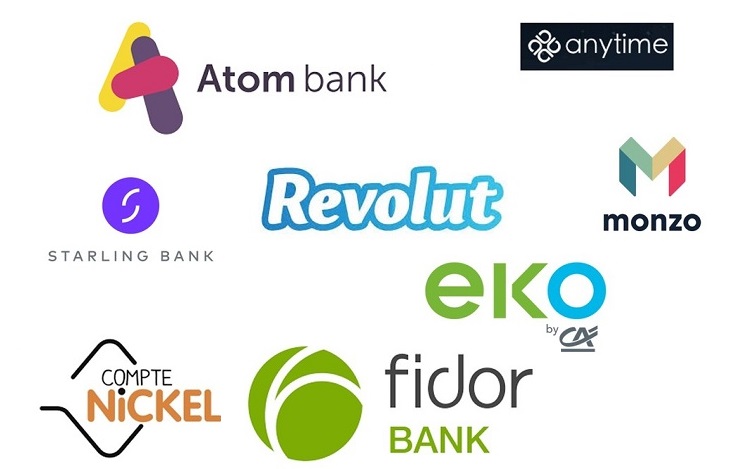
28 March, 2023 03:06

Photo: Collected
The financial industry is going through a revolution with the introduction of neobanks. Neobanks is also known as digital banks, are online-only banks that operate without physical branches. They offer customers a range of banking services, such as checking and savings accounts, loans, and credit cards, all accessible through mobile apps or websites.
Neobanks are becoming increasingly popular among consumers, especially millennials, and are disrupting the traditional banking models.
In this article, we are exploring the rise of neobanks and their impact on the financial industry.
What are neobanks?
Neobanks are digital banks that offer banking services entirely through online channels. They operate without physical branches and trust on technology to provide their customers with a continuous banking experience. Neobanks use digital platforms to connect with their customers and offer banking services that are often more user-friendly, efficient, and cost-effective than traditional banking activity. They also influence technology such as artificial intelligence (AI) and machine learning to personalize their offerings and provide a better customer experience.
Neobanks are often able to offer their services with lower fees and better interest rates because they have lower overhead costs than traditional banks. They do not have the expenses of maintaining physical branches, which require rent, utilities, staff, and other costs. For this reason, neobanks can offer their customers better deals and more value for their money.
What services do neobanks offer?
Neobanks offer a range of banking services, including checking and savings accounts, loans, credit cards, and investment products. Its also provide a wide range of financial management tools, such as budgeting tools, financial planning, and investment advice. Some neobanks also offer unique features such as rewards programs, fee-free foreign transactions, and round-up savings programs that help customers save money.
One of the key benefits of neobanks is that they offer their services completely through digital platforms. This means that customers can manage their finances anytime, anywhere, and from any device. Customer can easily access their accounts, make transactions, and get financial support without having to visit a physical branch.
Neobanks also offer a more personalized banking experience. It’s use technology to analyze customer data and offer customized services based on their spending habits, financial goals, and other factors. This personalized approach helps neobanks build stronger relationships with their customers and provide a better overall experience.
The rise of neobanks
The rise of neobanks is due to several factors. One of the main drivers is the increasing use of mobile devices and the internet. Customers are looking for more convenient and accessible ways to manage their finances, and neobanks offer an easy-to-use digital platform that meets their needs. The corona pandemic (covid-19) has also accelerated the adoption of digital banking, as customers are increasingly avoiding physical branches due to health concerns.
Many customer are frustrated with the high fees, complex products, and poor customer service provided by traditional banks. Neobanks offer a refreshing alternative, with lower fees, simplified products, and better customer support.
Neobanks are also attracting a younger demographic. Neobanks offer a mobile-first approach that appeals to this demographic, with features such as instant notifications, mobile check deposit, and mobile payments.
The impact of neobanks on traditional banking models
The growth of neobanks is having a significant impact on the traditional banking models. Neobanks are disrupting the financial industry by offering innovative and user-friendly solutions that challenge the traditional banking models. They are also putting pressure on traditional banks to improve their services and adapt to the changing market.
One of the main impacts of neobanks on traditional banks is the competition for customers. Neobanks are attracting customers away from traditional banks by offering better deals, more convenience, and a better overall experience. This has put pressure on traditional banks to lower their fees, improve their digital offerings, and provide better customer service.
Traditional banks are also responding to the rise of neobanks by creating their own digital banking platforms. Many traditional banks have launched their own mobile apps and online banking services to compete with neobanks. However, they often struggle to match the user experience and value provided by neobanks, which have been designed from the ground up to meet the needs of digital consumers.
Another impact of neobanks on traditional banks is the shift towards open banking. Open banking refers to the practice of sharing financial data between different financial institutions. Neobanks are often at the forefront of open banking, as they rely on data sharing to offer their services. This has forced traditional banks to open up their systems and share data with other financial institutions, which has led to greater competition and innovation in the financial industry.
Neobanks are also changing the way that banking services are provided. They are often more agile and flexible than traditional banks, which allows them to respond more quickly to changes in the market. Neobanks are also more willing to partner with other companies to offer new services and products, which has led to the creation of new ecosystems in the financial industry.
The future of neobanks
The future of neobanks is bright. Neobanks are expected to continue to grow in popularity as more consumers adopt digital banking. They are also expected to expand their offerings to include more financial services, such as mortgages, insurance, and wealth management.
Neobanks are also likely to continue to disrupt the traditional banking models. They will push traditional banks to improve their services, lower their fees, and provide a better customer experience. They will also continue to drive innovation in the financial industry, creating new products and services that meet the evolving needs of digital consumers.
However, neobanks will also face challenges in the future. One of the main challenges will be maintaining profitability. Neobanks often operate on thin margins, and it can be difficult to generate revenue from digital banking services alone. Neobanks will need to find new revenue streams, such as partnerships with other companies, to maintain profitability.
Another challenge for neobanks will be regulatory compliance. Neobanks are subject to the same regulatory requirements as traditional banks, and they must comply with regulations such as KYC (Know Your Customer) and AML (Anti-Money Laundering) laws. Neobanks will need to invest in compliance programs to ensure that they meet these requirements and avoid regulatory penalties.
Finally, the rise of neobanks is transforming the financial industry. Neobanks offer innovative and user-friendly solutions that challenge the traditional banking models. They are attracting customers away from traditional banks by offering better deals, more convenience, and a better overall experience. Neobanks are also putting pressure on traditional banks to improve their services and adapt to the changing market.
The future of neobanks is bright. They are expected to continue to grow in popularity and expand their offerings to include more financial services. However, neobanks will also face challenges in the future, such as maintaining profitability and regulatory compliance.
আপনার মন্তব্য